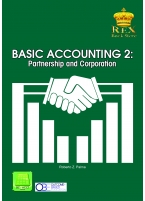Content

Use the second golden rule when dealing with real accounts, also called permanent accounts. Their remaining balances are instead carried over to the upcoming accounting quarter. Debit the account if your company has an expense or loss, with nominal accounts. Credit the account if your company needs to record gains or income.
Withdrawals or drawings are the cash or assets taken by the business owner for his personal use. In sole proprietorship and partnership firm, drawings account is used for entering all the withdrawals.
What are the golden rules of accounting?
The system of credit and debit is exact at the organization of the double-entry system of bookkeeping. It is very helpful, but at the same time, it is very tough to use in truth.
- In accounting, each transaction has a double-entry – credit and debit.
- Example- Assume you have sold an asset to your friend, you become the Giver here.
- If you desire to gain a true and deeper understanding of debits, credits, and accounts you are likely to find our free Explanation of Debits and Credits to be very helpful.
- Other standard terms in accounting are assets, audit, balance sheet, budgeting, cash flow, dividends, equity, and more.
- Let’s further discuss the rules governing the use of debits and credits in a journal entry for several accounts.
- These accounts do not close at the end of the year and are carried forward.
- In the next blog, you will learn about process of recording financial transactions.
The initial step is to specify the category of account from either of the six categories indicated in the below table. Once the account is inferred correctly, apply modern rules of accounting to formulate a perfect journal entry.
Stay up to date on the latest accounting tips and training
The left column is for debit entries, while the right column is for credit entries. Current liability, when money only may be owed for the current accounting period or periodical. Personal accounts are liabilities and owners’ equity and https://online-accounting.net/ represent people and entities that have invested in the business. Accountants close out accounts at the end of each accounting period. This method is used in the United Kingdom, where it is simply known as the Traditional approach.
What is Financial Accounting? – Small Business Trends
What is Financial Accounting?.
Posted: Tue, 19 Apr 2022 07:00:00 GMT [source]
Financial statements, for example, are based on trustworthy accounting data that is backed up by this rule and other accounting principles. On the other hand, when something goes out of business, it can be any asset that is termed credited to the account. All the real accounts have liability, assets or equity accounts. Another thing regarding creating an account is that they don’t clear up at the end here. But all the assets or balances are taken over to the subsequent accounting. This use of the terms can be counter-intuitive to people unfamiliar with bookkeeping concepts, who may always think of a credit as an increase and a debit as a decrease.
Asset Account
Nowadays, companies can hire professional accounting services to ensure compliance with accounting standards and principles. This example shows a business receiving cash Using Debit and Credit: Golden Rules of Accounting, Concepts, Examples and making a sale. Budgeting and Future Projections– A good budget based on proper accounting practices can be a strong foundation for any business to be scaled up.
What are the different types of accounts give examples?
- Assets. Asset accounts usually include the tangible and intangible items your company owns.
- Expenses. An expense account can include the products or services a company purchases to help generate additional income.
- Income.
- Liabilities.
- Equity.